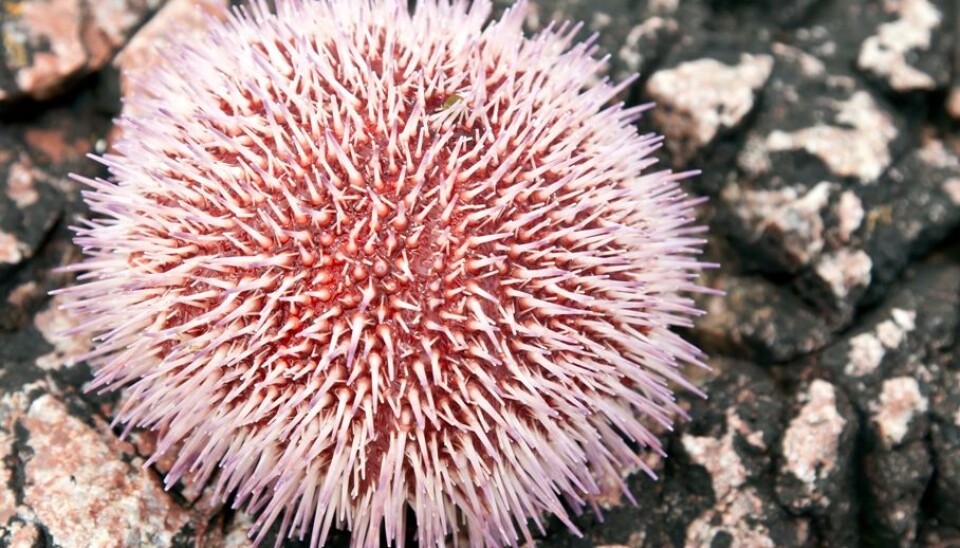
All eyes on sea urchins
It doesn’t have normal eyes – it sees with its entire body. Special light-sensitive cells turn this spiny ball of a creature into an optical organ.
Denne artikkelen er over ti år gammel og kan inneholde utdatert informasjon.
Vision takes an array of forms in the animal kingdom.
Many creatures have more primitive eyes than humans or less complicated than the faceted eyes of insects.
Nevertheless, most animals react to light, even many who don’t have obvious eyes.
Hunt for opsin
Earlier studies of sea urchins have shown that they have genes which in other creatures are connected with the development of retinas.
The retina covers the inside of the human eye and is the part that catches light.
The genes that sea urchins share with animals sporting retinas form a common eye protein called an opsin.
A group of Swedish scientists decided to hunt for places where opsin could be found in the round, spiny creatures.
On their tube feet
This would provide a hint as to where they could detect light-sensitive structures, or photoreceptors, in the sea urchin anatomy.
“We quite simply wanted to know where the sea urchin sees from,” says Sam Dupont at the Department of Marine Ecology at the University of Gothenburg, in a press release.
The researchers found these photoreceptors on the tips and bases of the tube feet, which the animals use along with their spines for locomotion.
These small feet are positioned all over the sea urchin.
Sticking out
Sea urchins are roughly spherical echinoderms without the arms of their cousins, starfish. They have a stiff skeleton, or test, made of fused calcium carbonate plates. Movable spines extend from small round tubercles all around the animal.
The body is on the inside of the skeleton. The shell is full of small pores. The sea urchin extends its long tube feet through the test.
“We argue that the entire adult sea urchin can act as a huge compound eye,” says Dupont.
“We also argue that the shadow that is cast by the animal's opaque skeleton over the light-sensitive cells can give it directional vision,” he says.
The sea urchin moves slowly, mainly with the help of its spines and tube feet.
More advanced
Researchers used to think these creatures had photoreceptors everywhere.
They assumed that these cells enabled sea urchins to sense light but not envision anything like a picture of its environs.
The new study shows that sea urchins are more advanced than that. It has a network of photoreceptors which are directly connected to its nerve system.
This indicates a vision system that is more complicated than light sensitive circuits, even though we would have to say the sea urchin sees with its feet.
Maybe it actually can perceive an image of the world down there on the seabed?
Translated by: Glenn Ostling































